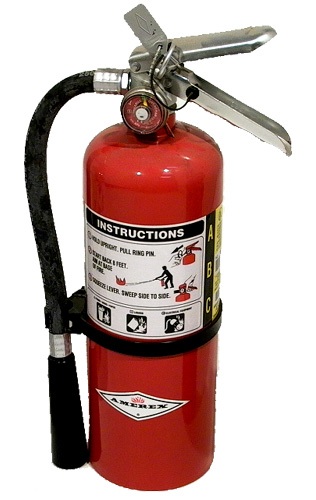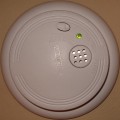What type of fire extinguisher should you use on each type of fire

Using a fire extinguisher is something that no one wants to experience,
because that would mean there is some kind of fire taking place. In the
unfortunate event that a fire extinguisher is needed, it is important to
know what kind of extinguisher you should use for different kinds of
fires.
According to BS EN 3 guidelines, every fire extinguisher needs to be red
in colour. However, there is a 5 percent zone allowed that can be
colour coded so that you can tell the difference in the contents of a
specific fire extinguisher. This plays an important role as there are
certain chemicals that should be used to put out certain types of fires.
Before going over the contents and coding of the different types of
fire extinguishers, it is also important to know the different
classifications of fires. The classifications are broken down into the
types of materials that are on fire, and are classified by letters
ranging from A to F.
CLASS A- Solids. Includes materials such as wood, plastic, and paper.
CLASS B- Flammable Liquids. Examples:Oil, Paraffin, Petrol.
CLASS C- Flammable Gases. Examples:Methane, Butane, Propane.
CLASS D- Metals. Examples:Magnesium, Titanium, Aluminum.
CLASS E- Electrical fires.
CLASS F- Cooking oil and fat. Example:Grease fires.
A red colour coding indicates that the contents of the fire extinguisher
is water. These are the cheapest fire extinguishers you will find, and
the most popular. However, these fire extinguishers should only be used
on Class A fires. Using one of these extinguishers on an electrical fire
will only make things worse, and could worsen or be virtually
ineffective against other types of fires.
Fire extinguishers coded with a cream colour indicate that it is a foam
fire extinguisher. While it is a little more expensive than a water
extinguisher, it can also be used on more classes of fires. These
extinguishers will be effective against both Class A and B fires, and if
mistakenly used on an electrical fire will be much safer than using
water.
A fire extinguisher that has a blue colour coding contains dry powder.
These types of extinguishers are especially effective against Class B
fires, but can be useful to help exterminate fires that fall under
Classes A and C as well. It is for this reason a dry powder fire
extinguisher is known as a "multi-purpose" extinguisher. Keep in mind
that although this can be an effective tool to help put out fires
resulting from gas, it is always important to turn off the gas supply
prior to trying to put out the fire. Any time the gas supply is not
isolated first, it can lead to a dangerous situation. For metal fires
that fall into the Class D category, there are special powders available
that will be useful in putting out the fire. Dry powder extinguishers
while being effective can also leave behind quite a mess. They also have
a tendency to damage machinery and other objects, and can blur your
vision when being used indoors.
Extinguishers that come with a black colour coding indicate that it is a
carbon dioxide, or CO2, extinguisher. This is the recommended method of
fighting Class E electrical fires, and it is also highly effective
against Class B liquid fires. The thing to remember about this type of
fire extinguisher is that it provides no security for after the fire is
out, meaning that the fire could start again. A carbon dioxide
extinguisher with a wet chemical is a special extinguisher that is made
for putting out Class F fires. There is also a specialist fire
extinguisher for use against Class D metal fires such as sodium,
lithium, and manganese, when the metal is in the form of turnings or
swarf.
Any fire extinguisher that has been green colour coded is a Halon fire
extinguisher, and has been deemed illegal except for use by the military
or law enforcement. By knowing how the colour coding relates to the
chemicals that are present in a particular fire extinguisher and how
each of these relates to being able to extinguish different classes of
fires you can better prepared to have the proper fire extinguisher on
hand for the type of fire that could occur in your home or business.
Using the proper extinguisher for the type of fire that is present will
not only help in getting the fire under control, but will also be a
factor in making sure it will be done safely.






